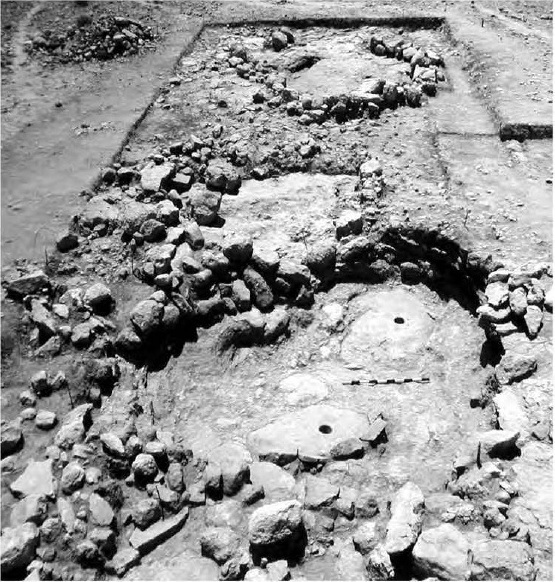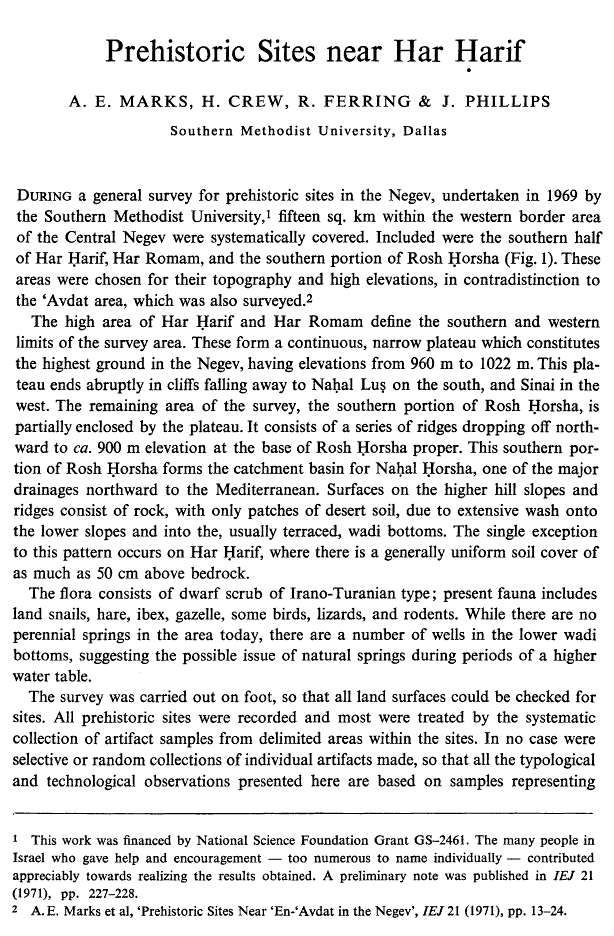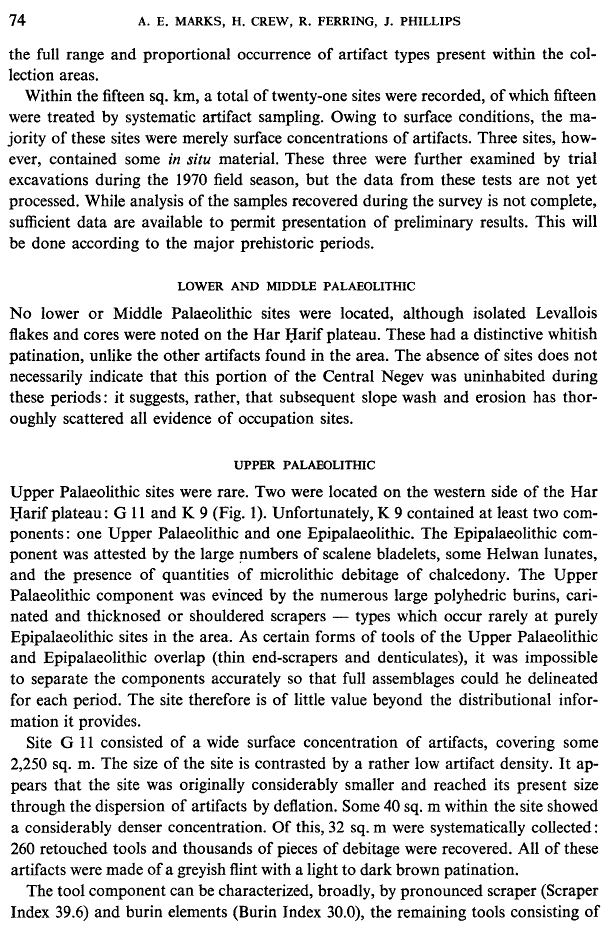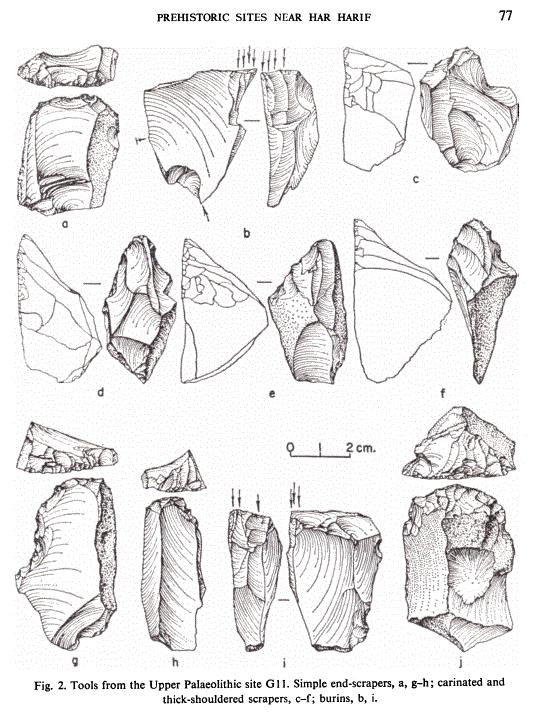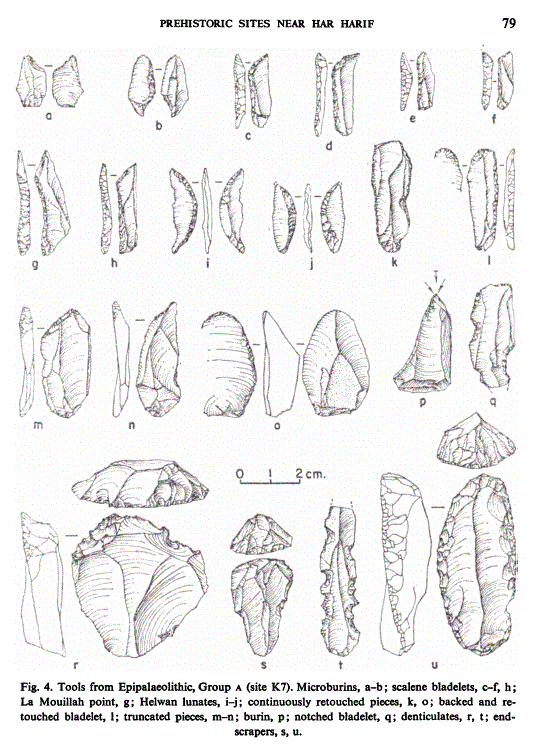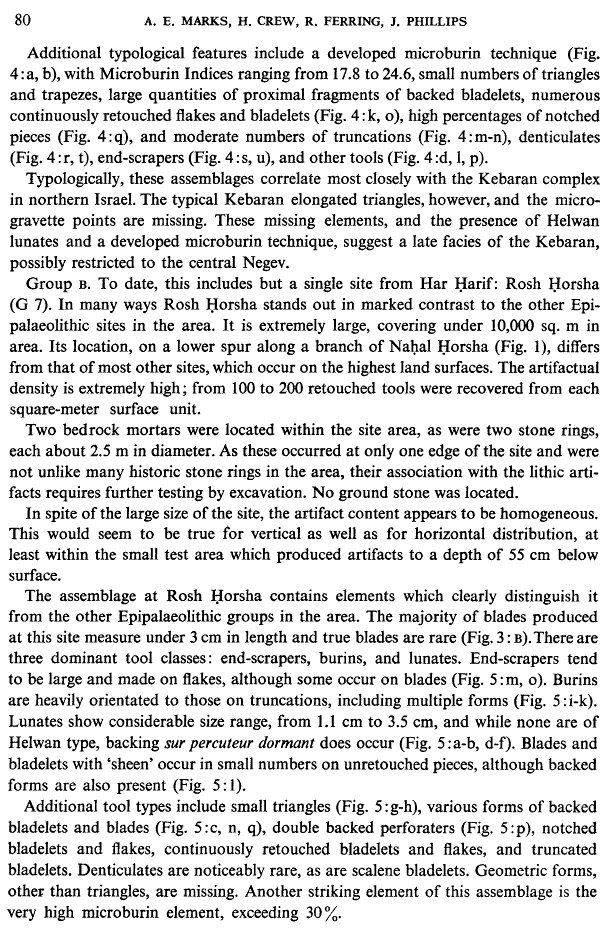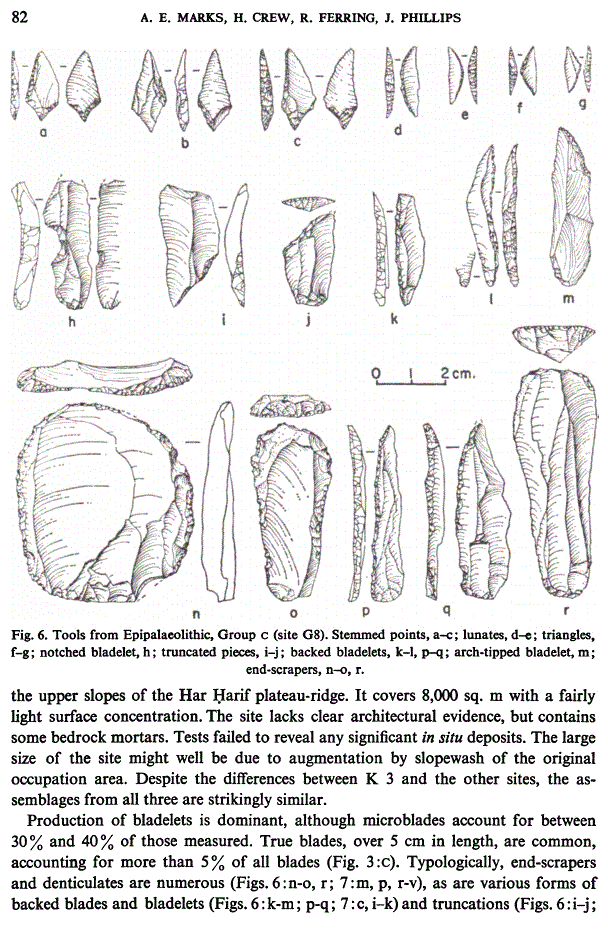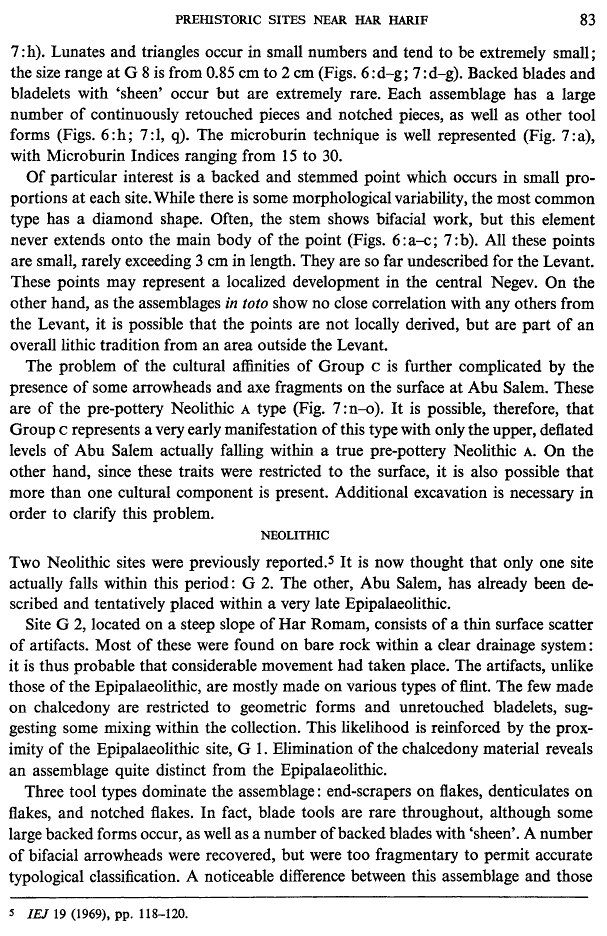|
Other Archaeological Sites / The Neolithic of the Levant (500 Page Book Online) PreHistoric Har Harif in the Negev Desert of Southern Israel
Excerpts and Definitions and Addendums Selected Excerpt on the Neolithic Harifian Industry The Neolithic of the Levant (1978) --- A.M.T. Moore (Oxford University) Pre-History and Archaeology Glossary ... Another group of sites with a post-Mesolithic 2 industry has recently been found in the Negev and northern Sinai. The type-site is Abu Salem (G12) on the Har Harif plateau ... Chapter 3: Neolithic 1 Har Harif (Pages 113-117)
Mount Harif is located at the highest elevations of the central Negev Desert adjacent to the Sinai Peninsula at elevations of between about 900 and 1000 metres above sea level. The region comprises a series of narrow plateaus and rolling hills sharply dissected by deep wadis and the escarpment overlooking Sinai. It was first investigated by an expedition under the direction of A.E. Marks from 1969-1974 ...
The Harif Point: A New Tool Type From the Terminal
Pre-Historic Sites Near Har Harif (1972) by A. Marks et al
More extensive excavations were conducted by Goring-Morris and Avi Gopher in 1980-81 ...
Negev Highlands Project: Two Seasons of Excavations of Natufian -- Harifian These excavations indicated occupation of the area from at least the Middle Paleolithic through the Late Neolithic periods. Geologically speaking this area contained relatively abundant plant and animal food resources during the Late and Terminal Pleistocene and so provided an attractive focus for local hunter-gatherer bands ... Upper Paleolithic Period: Several exposed surface sites were discovered on top of the plateau adjacent to Mount Harif including K9A -- G11 and Har Horesha I. The lithic (stone) assemblages all display flake technologies with scrapers -- burins and retouched pieces comprising the main tool categories. The assemblages have thus been assigned to the Levantine Aurignacian complex. EpiPaleolithic Period: A series of sites (G9-K9-G14-K5-K6-K7-G3) at the top of Mount Harif and the adjacent plateaus formed the basis for the techno-typological definition of the Ramonian entity -- the same as that formerly termed Negev Kebaran. The Ramonian is a microlithic industry featuring high frequencies of distinctive straight or concave backed and distal oblique truncations achieved using the microburin technique -- the Ramon point. Other tool groups included scrapers and notches. The origins of the Ramonian as a whole are believed to lie in the more lowland Sinai-based Mushabian complex. It thus appears likely that the Ramonian can be dated to 13000-12000 BP ... Late Natufian Culture: The huge in situ Natufian complex of Rosh Horesha-Saflulim is located in an adjacent shallow valley. It is the southernmost Natufian base camp known in the Negev. Carbon-14 dates from charcoal are: Rosh Horesha (10880 BP +/- 280 SMU-10) and Saflulim (11150 BP +/- 100 OxA-2869 and 10930 BP +/-130 OxA-2136). Rosh Horesha alone extends for at least 4000 to 5000 square metres. Saflulim -- some 200 metres away and on the other side of the wadi -- is less extensive. Many bedrock mortars in the vicinity indicate that plant resources -- probably pistachio nuts but perhaps also barley -- were major staples in addition to meat from hunted prey including gazelle -- ibex and some onager as well as wild sheep. The associated lithic assemblage was abundant and fully compatible with other Late Natufian assemblages in the Negev Harifian Culture: This Terminal EpiPaleolithic Culture is named after a series of sites found on Har Harif. The best documented are Abu Salem (G12) -- Ramat Harif (G8) -- Shluhat Harif (K3). From a series of carbon-14 dates from charcoal it is estimated that the Harifian may have lasted from about 10750 BP to 10100/10000 BP. The faunal remains include gazelle -- ibex and wild sheep as well as occasional onager and aurochs. The lithic industry was microlithic with quantities of very small lunates (22%). Another characteristic form were scrapers (11%) -- many of which are crudely denticulated. Micogravettes and other pointed microliths were quite common. Most distinctive however is the Harif point and its derivatives which constitute an early arrowhead form. The transhumant Harifian occupation was disrupted by the dessication of the area leading to the virtual abandonment of the Negev for approximately 1000 years ... PrePottery Neolithic B: Abu Salem was subsequently reoccupied as a campsite with a few small structures in the PPNB. The lithic assembly was knapped on different raw material from that of the Harifian enabling a seperation of the two elements ...
Abu Salem: Type-Site of the Harifian Industry of the Southern Levant The Harifian and Neolithic 1 in Palestine appear to have been contemporaneous and the distribution of sites of each group is mutually exclusive. They both developed from Mesolithic 2 in their respective areas and had many cultural features in common. This suggests that they are both variations of the same cultural complex -- that is the first post-Mesolithic 2 culture in the southern Levant. The similarities in the material remains of the two groups would also indicate that their inhabitants were living in much the same way. We may thus include Harifian sites within Neolithic 1 of the Levant ...
The Harifian of the southern Levant by Nigel Goring-Morris (1991)
Harifian --- WikiPedia
|
